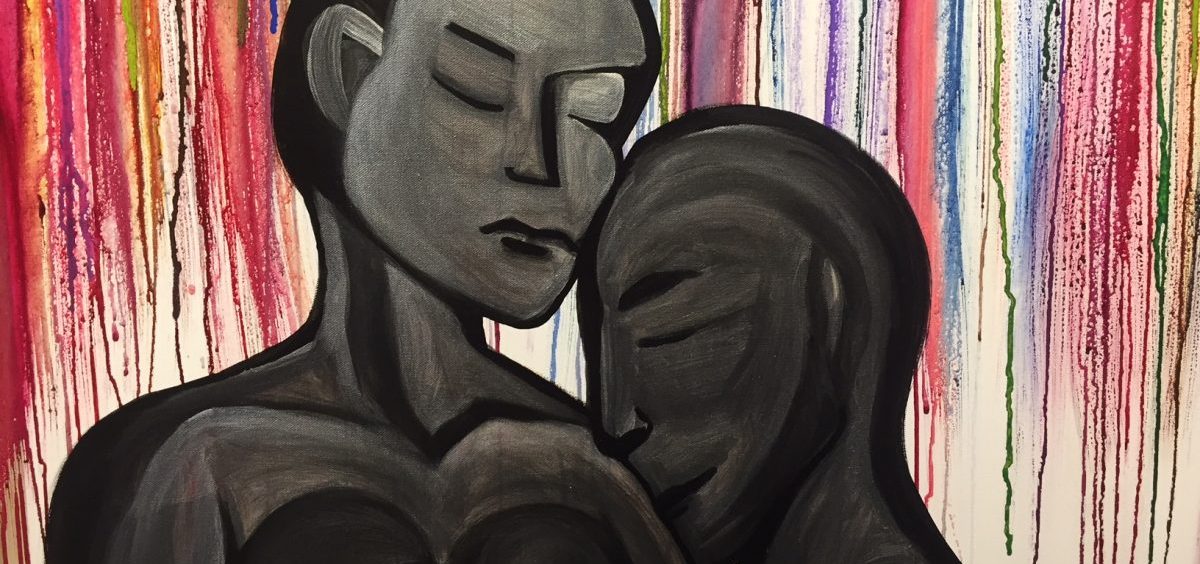
Breaking Stereotypes Through Creative Expression
By: Natalie Colarossi
Posted on:
The Women of Appalachia Project (WOAP) began in 2009 as a movement to support female artists from Appalachia and to dispel the stereotypes often associated with the region. The project represents visual and spoken-word artists, and invites women across the Appalachian region yearly to submit their work and have it displayed in galleries or performed live at spoken-word events.
It has grown in size and scope over the years, expanding from a mere vision with a handful of artists, to a project that currently represents 67 women across nine Appalachian states.
This year, the WOAP visual art will be shown in galleries in West Virginia and Ohio, and the Spoken Word artists will perform in venues throughout Kentucky, West Virginia, and Ohio.
The WOAP started with a dinner conversation between Athens artist Kari Gunter-Seymour and Winsome Chunnu, Associate Director of the Multicultural Center and Director of the gallery at Ohio University’s Baker Center.
“I turned to her [Chunnu] and said ‘Have you ever thought about the fact that Appalachian women in particular are a minority culture? Because when you mention an Appalachian woman, people immediately envision a stereotype of no teeth, bare foot, over-weight, under-educated, and so on,” said Gunter-Seymour.
Chunnu agreed and asked Gunter-Seymour to put something together for the Multicultural center to review. A few months later, they decided to take on the project, and Gunter-Seymour became the leading force behind the WOAP.
Since then, the WOAP has maintained its message throughout the years by stressing the importance of representing female artists from the wide and winding Appalachian region. Through social media and word of mouth, the WOAP has quickly expanded across the sprawling 12-state region and now typically receives submissions from well over 100 Appalachian women each year.
Since the gallery space and spoken-word venues can accommodate only so many artists, the WOAP has developed a jury system in which two jurors, one visual art, one spoken word, come together to review all submissions and choose the ones they think best fit the project. The women chosen then have their art displayed or performed at numerous locations throughout the year, always with the opportunity to sell their work.
“Many of these artists have never shown their work before. How empowering is that if someone buys their piece?” said Gunter-Seymour.
Each year the artists range in background and age, from 15-72 years old, spanning all the way from Ohio to Georgia.
“The WOAP is important because it showcases the talent of Appalachian women. It gives us the opportunity to encourage and support each other no matter what age or background,” said 2018 WOAP visual artist, Emalea Rupe.
The artists themselves come from a variety of education and art backgrounds; some are practicing artists, others are teachers, office workers, curators, and students. Some of the artists have never submitted or showcased their work before, and found a voice for their expression through the WOAP.
Upon submitting their work, the artists are each asked to write an explanation about the impact of being an Appalachian woman. This allows the jurors and fellow artists to learn more about each other, while providing a community for Appalachian women to share their stories.
“There’s such a sisterhood that has developed throughout this project. I can’t even tell you how many women I’ve gotten close to and kept in touch with over the years,” said Gunter-Seymour.
The parameters for submitting work require only size restrictions, and allow the women to each submit up to six pieces. Other than that, it’s free range for the women to write or make whatever they want.
Sarah Diamond Burroway of Kentucky, discusses her experience at the spoken word events, and the diversity among WOAP writers.
“The best part of sharing that experience is being an audience member and hearing about others experiences…we’ve had slam poets, we’ve had storytellers that are passing on a traditional style of true spoken word, and stories, essays, and poetry on any topic under the sun.” she said. “I think that is one of the things that I’ve enjoyed most is to see how open and how broad some of the subject matter is – from something as simple as a memory that one of the writers had of her father coming home from work when she was a child and the sweetest, most honest pure poem that you could image, to very complex stories about body shaming or childbirth, to other very complex physical and spiritual writing.”
Though the WOAP has already grown vastly since its inception in 2009, the project has ambitious plans for the future. The WOAP is currently working with Ohio University’s Voinovich School to discuss the possibility of getting their artwork and message out to galleries beyond the Appalachian region.
“We feel like this story needs to go to metropolitan areas to really get our message across,” Gunter-Seymour said. “While showcasing Appalachian artists within their own region provides an opportunity for women to have their work supported, it can often be “preaching to the choir.”
However, to have work shown in a New York City gallery, further removed from Appalachia, and where stereotypes may exist in a stronger fashion, might allow these artists a chance for wide-spread representation and recognition, Gunter-Seymour explained.
“You want to shout from the mountaintops and say my goodness look at me! I am not who you think I am. But it doesn’t matter, because if you’re shouting, no one is going to listen,” she said. “But when you have this mild sort of activism that just says okay, now you can’t look at this art and you can’t hear my poem and deny that I am a very special woman…that’s what I love about it. It’s passive activism and that’s what is going to get us to the top.”


